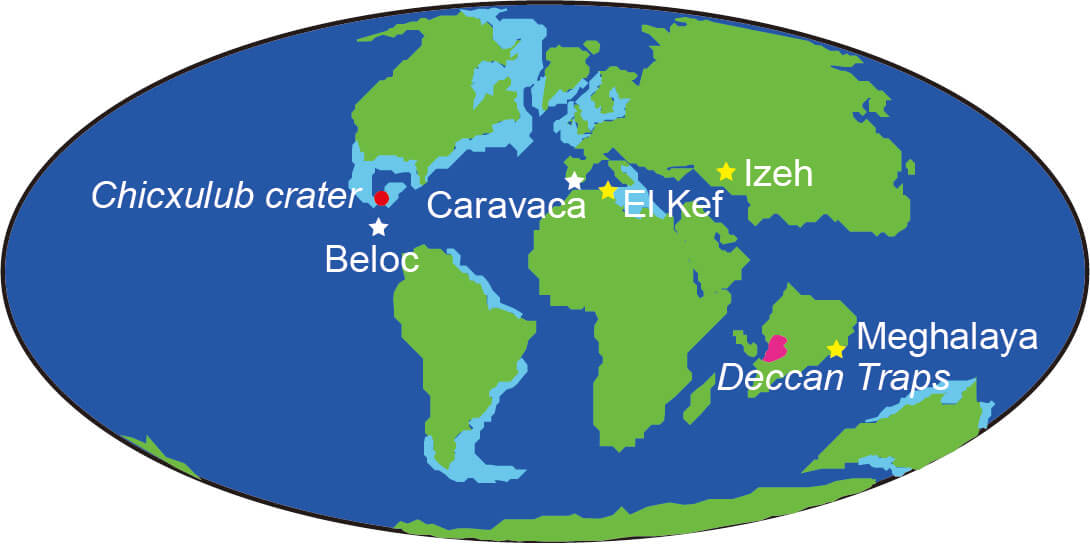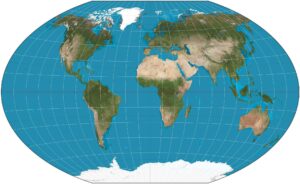Ancient Map World
Creating a map from 6.6 billion years ago is a challenging task, but not impossible. Because the map we see of the present world is familiar, but the world was not always like that. Our planet has a vast history. It is not appropriate to be ungrateful to the scientists who painstakingly created this map. Because this map is not a product of imagination or fiction. It is created based on complete scientific knowledge.
The map you are seeing below, the one from 6.6 billion years ago, shows the time when dinosaurs inhabited the Earth. If dinosaurs could understand maps, they might have been happy! Because at that time, present-day India and Bangladesh were located in the area marked by a circular red spot called the Deccan Traps in Mexico. The Meghalaya plateau borders our country.
In the map below, the notable red-marked locations primarily indicate the places of volcanic eruptions from the supercontinent Pangea. That is, where the impact of volcanic eruptions occurred on the present Earth. And if compared to the present Earth, it corresponds to the Chicxulub crater in Mexico. Another red-marked location is mainly the Agneyagiri volcanic eruption in the vast region of the Agneyagiri range near our neighboring country India, around 660 million years ago.
It is assumed that the disappearance of the Cretaceous-Paleogene fauna, including large-sized dinosaurs, occurred due to this massive volcanic eruption when about 75% of the Earth’s species died. Other yellow stars represent primary evidence of the disappearance of the Cretaceous-Paleogene fauna and other related subjects. For example, El Kef in Tunisia, Izek in Iran, and Meghalaya in India. In other words, it can be understood from this world map that the history of the Earth is not straightforward.

How I have made this Ancient Map World
This map has been created with the help of Illustrator (Dr. Raman) based on the previous version of the map. However, it can also be easily created using various software. It provides a good understanding of the changing locations of the continents over time on our planet. You can obtain it from a computer-based website that is created based on various scientific evidence. Visit the website to see the locations of all the continents in the past of the Earth.”

